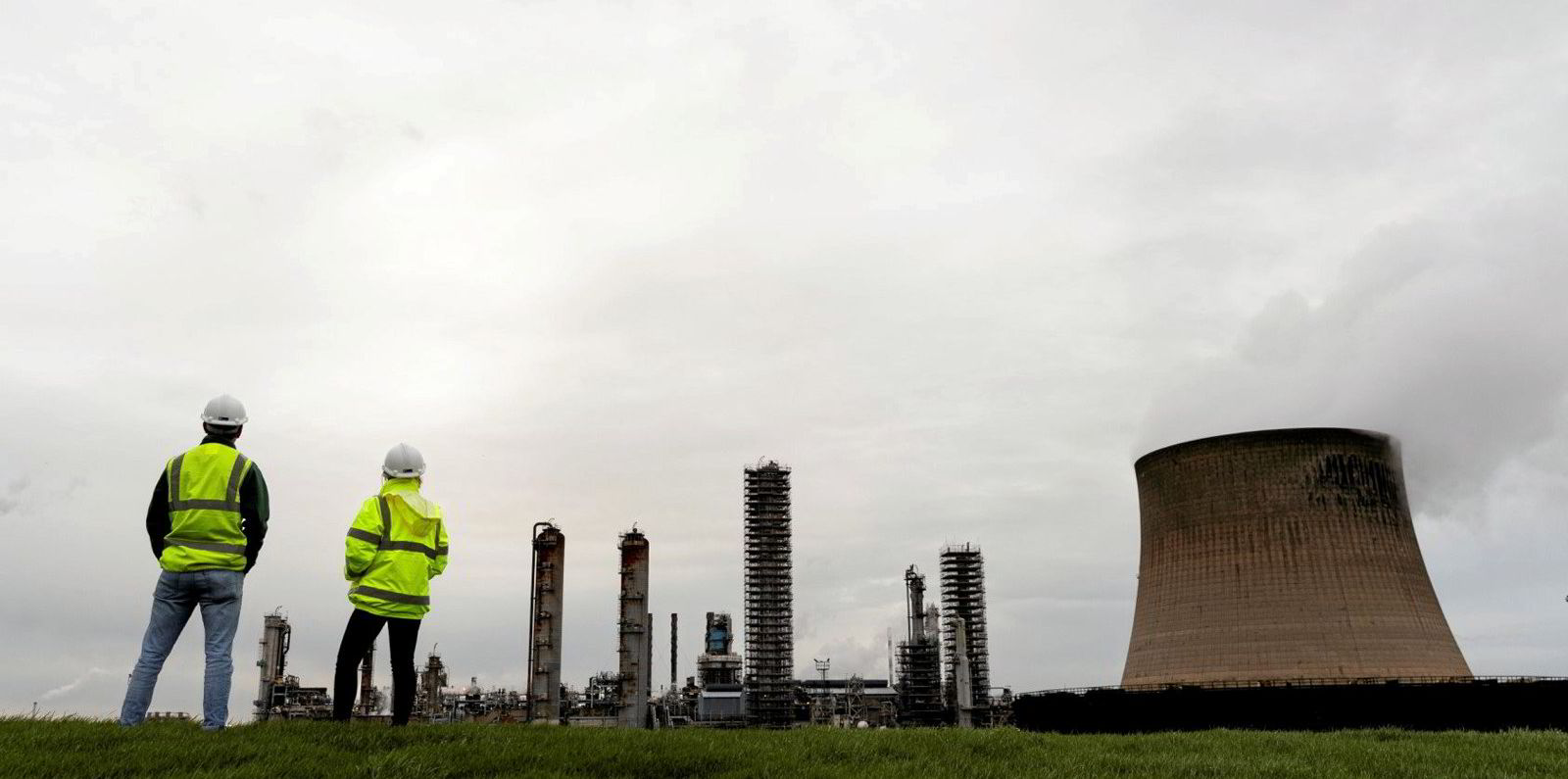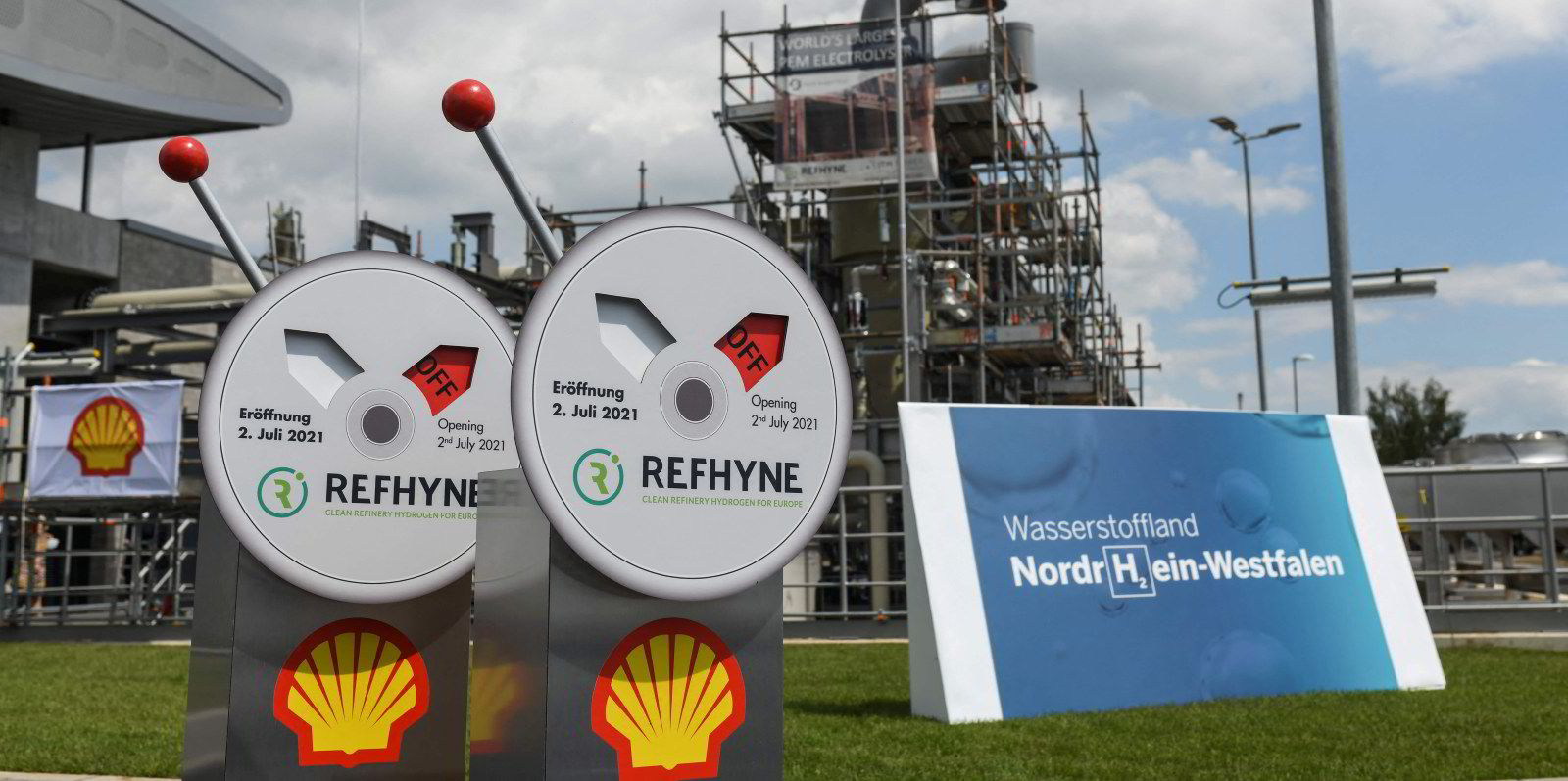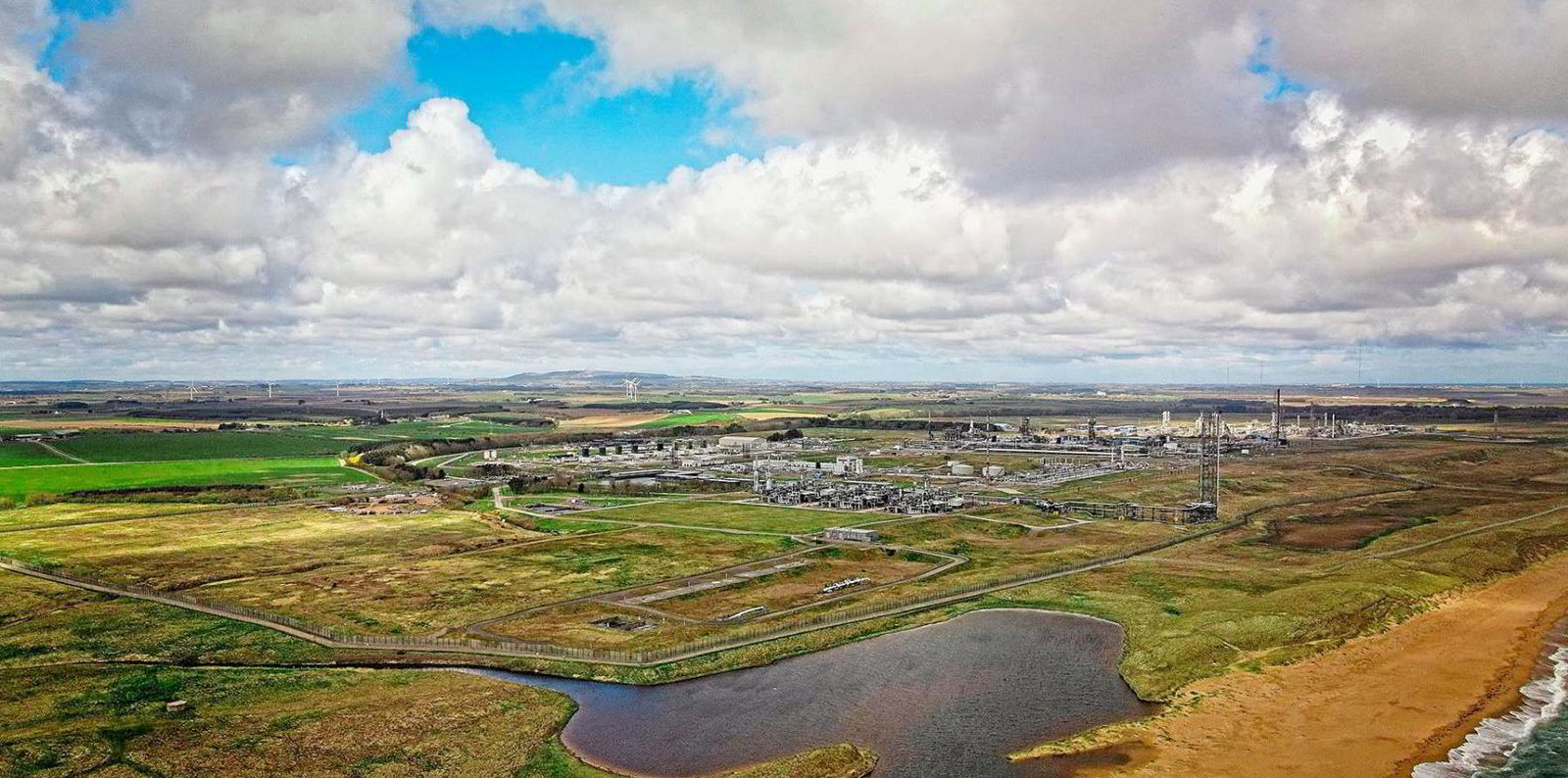Production of fully decarbonised gas will require the use of renewable energy and further emissions reductions throughout the value chain
Blue hydrogen produced from natural gas with carbon capture and storage is often criticised because it is not a fully zero-emission outcome.

Old ways: flaring by-pass gas at a Rosneft-operated field in West Siberia, Russia
"Not rocket science"
Andersen says that reducing upstream emissions is not “rocket science” — all gas companies could reduce them if they chose to, but that would require them to accept additional costs.
“We have electrified a lot of our offshore installations, so we're using a lot of renewable power to drive all our rotating equipment on offshore platforms; we are implementing CCS.
"When it comes to maritime sectors we also — because we are running a lot of vessels globally — are looking into replacing that with less carbon intensive fuels, of course, [over the] long term, ammonia or biofuels. In methane leakage, we have implemented a lot of different methodologies and processes to avoid leakages, both during start-ups and shutdowns and critical operations where these things can happen.

UK industrial cluster says blue hydrogen needed now to reach net-zero goalsRead more
“These are not rocket science. It's more like a cost issue. People must be willing to take that potential extra cost to implement it.”
Total capture?
Andersen stresses that 100% carbon capture from methane reforming is not physically possible.
“In these blue hydrogen processes, there will always be some CO2 remaining because they are catalytic processes,” Andersen says.
“So they are driven by what we call catalytic equilibrium, reaction equilibrium, and you can never get 100% conversion, that is more or less impossible when it comes to the laws of nature. But we believe with the best technology, we can achieve maybe up to 97% to 98%.”
He puts it in more simple terms by explaining the difficulties of capturing carbon dioxide from the flue gas at a natural-gas-fired power plant.
“The pressure is very low and the CO2 concentration is very low... so it’s very difficult. It's like finding a needle in a haystack. And the more [CO2] you take out, the smaller the needle gets to find the rest [of the CO2]. And finally, you can't get it.
“In a blue hydrogen plant, it's high-pressure CO2. So we have many more needles initially, and that's why you can capture much more CO2 in a blue hydrogen plant compared to a post-combustion plant, because the pressure is so high, so you can get down to [97% to 98%].”
According to a recent report by the UK’s Hydrogen and Fuel Cell Association, entitled The Case for Blue Hydrogen, the standard method of grey hydrogen production from natural gas — steam methane reforming (SMR) — can only capture 90% of CO2 emissions.
A slightly more expensive process, known as autothermal reforming (ATR), which requires the addition of pure oxygen, can capture 98%, it says.

Learning the hard way: Energy giants leap forward with transition, but could have been swifterRead more
Andersen explains that Equinor has not yet decided which of these two process it would use to produce blue hydrogen, but it would probably go with ATR.
“What we see is that for smaller scale and medium scale sizes, SMR will be the best solution. But when it comes to bigger scale, towards the 1 gigawatt [size], ATR is the more cost efficient solution.”
How blue hydrogen could become net zero
Andersen says that even though blue hydrogen is not intrinsically a net-zero solution, it could become one through the addition of carbon-neutral biogas, which is produced by fermenting plant matter inside huge tanks known as anaerobic digesters.
“One concept we have been working on, which we published a year and a half ago, is to add biogas — a carbon-neutral component — into the natural gas. So when you capture [the CO2 that was absorbed by the plant matter as it grew], it becomes carbon-negative. Maybe [adding] 5% in total will also cover potential upstream emissions.”
(A version of this article first appeared in Upstream's sister publication Recharge on 15 July, 2021)(Copyright)
Blue hydrogen produced from natural gas with carbon capture and storage is often criticised because it is not a fully zero-emission outcome.

Old ways: flaring by-pass gas at a Rosneft-operated field in West Siberia, Russia
Photo: EURASIA.EXPERT
In an interview with Upstream's sister publication Recharge, Equinor vice president of low-carbon technology Henrik Solgaard Andersen acknowledged that a more comprehensive low-emission solution needs to be found.
At present, it is only possible to capture up to 98% of carbon dioxide emitted in the process of methane reforming, although levels of around 90% are seen as a more realistic of industry practice
However, the entire blue hydrogen value chain is also likely to produce significant greenhouse gas emissions unless efforts are purposely taken to reduce them.
Almost every stage of the process — from extracting natural gas to transporting it, compressing the hydrogen, and capturing the CO2 and moving it to storage — has potential for CO2 emissions, either directly or indirectly from the use of fossil-fuel power, and leakage of methane is also a constant risk.

ExxonMobil joins Acorn carbon capture and storage project in ScotlandRead more
To make blue hydrogen a truly low-carbon solution, critics say, all the electricity used throughout the value chain should come from renewable sources, CO2 emissions from gas flaring must be eliminated and stringent monitoring would be needed to ensure minimal leakage of methane.
“These [emission-reduction solutions] must be implemented in the gas industry to make blue hydrogen a long-term option," says Andersen. “Otherwise upstream emissions will kill the concept [of blue hydrogen].”
He explains: “I’m always honest saying that if we talk about a weakness of blue hydrogen it’s the upstream emissions. So it's key that the natural gas you're providing for blue hydrogen has low emissions and that means both in terms of CO2 and methane leakages.”
The Dane says that strict regulations in Norway have required Equinor to spend time and money on reducing its upstream methane and CO2 emissions, including powering some of its offshore platforms from shore using hydroelectricity and recycling excess gas down to the reservoir, rather than flaring.
“That means, in fact, the offshore emissions [at such platforms] are close to zero, and that’s the same type of solutions you need when you’re sourcing other types of natural gas,” he says.
“So when you are, let’s say, using Russian gas, that needs to be compressed all the way from Yamal [in northwest Siberia] to the UK; you need to use renewable power when you do the recompression, otherwise you would just add a lot of CO2 emissions.
“And when you are importing LNG, you need to make sure the LNG production has CCS [because the liquefaction process separates out any CO2 present in the natural gas] like we do in Norway at Snohvit.”
In an interview with Upstream's sister publication Recharge, Equinor vice president of low-carbon technology Henrik Solgaard Andersen acknowledged that a more comprehensive low-emission solution needs to be found.
At present, it is only possible to capture up to 98% of carbon dioxide emitted in the process of methane reforming, although levels of around 90% are seen as a more realistic of industry practice
However, the entire blue hydrogen value chain is also likely to produce significant greenhouse gas emissions unless efforts are purposely taken to reduce them.
Almost every stage of the process — from extracting natural gas to transporting it, compressing the hydrogen, and capturing the CO2 and moving it to storage — has potential for CO2 emissions, either directly or indirectly from the use of fossil-fuel power, and leakage of methane is also a constant risk.

ExxonMobil joins Acorn carbon capture and storage project in ScotlandRead more
To make blue hydrogen a truly low-carbon solution, critics say, all the electricity used throughout the value chain should come from renewable sources, CO2 emissions from gas flaring must be eliminated and stringent monitoring would be needed to ensure minimal leakage of methane.
“These [emission-reduction solutions] must be implemented in the gas industry to make blue hydrogen a long-term option," says Andersen. “Otherwise upstream emissions will kill the concept [of blue hydrogen].”
He explains: “I’m always honest saying that if we talk about a weakness of blue hydrogen it’s the upstream emissions. So it's key that the natural gas you're providing for blue hydrogen has low emissions and that means both in terms of CO2 and methane leakages.”
The Dane says that strict regulations in Norway have required Equinor to spend time and money on reducing its upstream methane and CO2 emissions, including powering some of its offshore platforms from shore using hydroelectricity and recycling excess gas down to the reservoir, rather than flaring.
“That means, in fact, the offshore emissions [at such platforms] are close to zero, and that’s the same type of solutions you need when you’re sourcing other types of natural gas,” he says.
“So when you are, let’s say, using Russian gas, that needs to be compressed all the way from Yamal [in northwest Siberia] to the UK; you need to use renewable power when you do the recompression, otherwise you would just add a lot of CO2 emissions.
“And when you are importing LNG, you need to make sure the LNG production has CCS [because the liquefaction process separates out any CO2 present in the natural gas] like we do in Norway at Snohvit.”
"Not rocket science"
Andersen says that reducing upstream emissions is not “rocket science” — all gas companies could reduce them if they chose to, but that would require them to accept additional costs.
“We have electrified a lot of our offshore installations, so we're using a lot of renewable power to drive all our rotating equipment on offshore platforms; we are implementing CCS.
"When it comes to maritime sectors we also — because we are running a lot of vessels globally — are looking into replacing that with less carbon intensive fuels, of course, [over the] long term, ammonia or biofuels. In methane leakage, we have implemented a lot of different methodologies and processes to avoid leakages, both during start-ups and shutdowns and critical operations where these things can happen.

UK industrial cluster says blue hydrogen needed now to reach net-zero goalsRead more
“These are not rocket science. It's more like a cost issue. People must be willing to take that potential extra cost to implement it.”
Total capture?
Andersen stresses that 100% carbon capture from methane reforming is not physically possible.
“In these blue hydrogen processes, there will always be some CO2 remaining because they are catalytic processes,” Andersen says.
“So they are driven by what we call catalytic equilibrium, reaction equilibrium, and you can never get 100% conversion, that is more or less impossible when it comes to the laws of nature. But we believe with the best technology, we can achieve maybe up to 97% to 98%.”
He puts it in more simple terms by explaining the difficulties of capturing carbon dioxide from the flue gas at a natural-gas-fired power plant.
“The pressure is very low and the CO2 concentration is very low... so it’s very difficult. It's like finding a needle in a haystack. And the more [CO2] you take out, the smaller the needle gets to find the rest [of the CO2]. And finally, you can't get it.
“In a blue hydrogen plant, it's high-pressure CO2. So we have many more needles initially, and that's why you can capture much more CO2 in a blue hydrogen plant compared to a post-combustion plant, because the pressure is so high, so you can get down to [97% to 98%].”
According to a recent report by the UK’s Hydrogen and Fuel Cell Association, entitled The Case for Blue Hydrogen, the standard method of grey hydrogen production from natural gas — steam methane reforming (SMR) — can only capture 90% of CO2 emissions.
A slightly more expensive process, known as autothermal reforming (ATR), which requires the addition of pure oxygen, can capture 98%, it says.

Learning the hard way: Energy giants leap forward with transition, but could have been swifterRead more
Andersen explains that Equinor has not yet decided which of these two process it would use to produce blue hydrogen, but it would probably go with ATR.
“What we see is that for smaller scale and medium scale sizes, SMR will be the best solution. But when it comes to bigger scale, towards the 1 gigawatt [size], ATR is the more cost efficient solution.”
How blue hydrogen could become net zero
Andersen says that even though blue hydrogen is not intrinsically a net-zero solution, it could become one through the addition of carbon-neutral biogas, which is produced by fermenting plant matter inside huge tanks known as anaerobic digesters.
“One concept we have been working on, which we published a year and a half ago, is to add biogas — a carbon-neutral component — into the natural gas. So when you capture [the CO2 that was absorbed by the plant matter as it grew], it becomes carbon-negative. Maybe [adding] 5% in total will also cover potential upstream emissions.”
(A version of this article first appeared in Upstream's sister publication Recharge on 15 July, 2021)(Copyright)
No comments:
Post a Comment